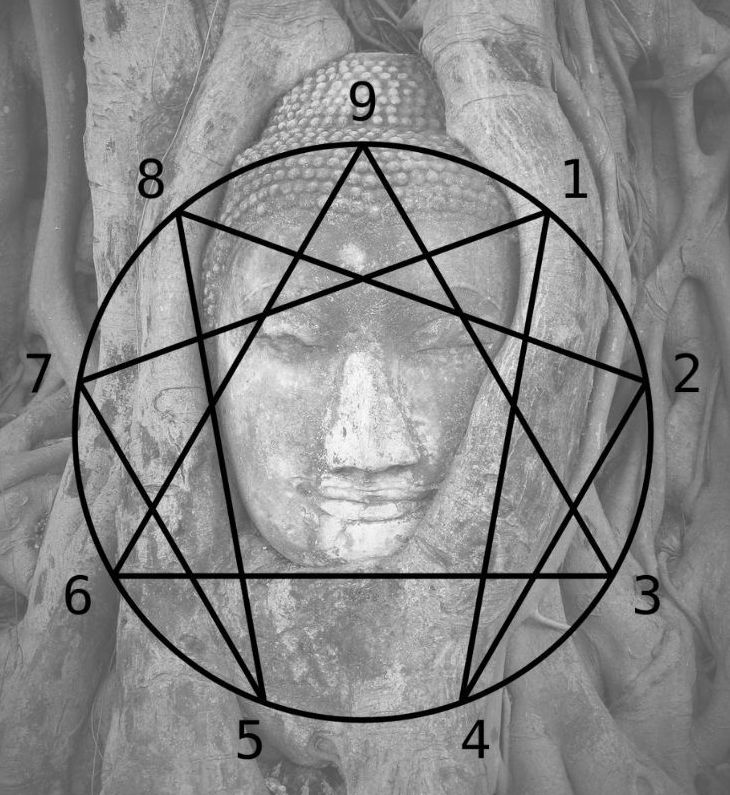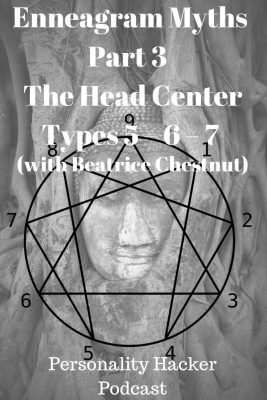Download Episode Here – right click link and select “Save Link As…”
In this episode Joel and Antonia talk with Enneagram expert and author Dr. Beatrice Chestnut about the Enneagram types of 5 – 6- 7 and the common myths and misconceptions we have around them.
In this podcast you’ll find:
Want to Learn More From Beatrice? Check out:
To subscribe to the podcast, please use the links below:
Subscribe with iTunes
Non-iTunes Link
Soundcloud
Stitcher
Google Play
Spotify
Radio Public
PlayerFM
Listen Notes
If you like the podcast and want to help us out in return, please leave an honest rating and review on iTunes by clicking here. It will help the show and its ranking in iTunes immensely! We would be eternally grateful!
Want to learn more?
Discover Your Personal Genius
We want to hear from you. Leave your comments below…



Share:
Podcast - Episode 0286 - Enneagram Myths Part 2 - The Heart Center Types 2 - 3 - 4 (with Beatrice Chestnut)
Podcast - Episode 0288 - Being An ENFJ Man (with Denzel Mensah)
9 comments
The thing about 5’s when I read the descriptions online all I get from that (similar as the INTX’s by the way) is that they confuse a personality type with an actual psychological disorder like Schizoid personality disorder. People with that disorder may have trouble expressing their emotions and being unfeeling or having difficulty with knowing their feelings.
But the Enneagram is not theory of personality disorder, but a tool to grow out of our spiritual vices. The potential spiritual vice people can have are numerous but the main vice type 5 has is to withhold energy, time, help, attention, whatever we experience as taking mental/emotion/physical effort. What we need to stop doing is think we actually have this finite source of resources, because often times we limit ourselves, when we can actually do more, it’s all cognitive errors and our emotions keeping the cycle in tact.
The biggest trap with fixing it however, could be overdoing our activities, so in the end of the day we need to find the ideal middle path. Baby-steps.
Thank you Beatrice.
Wings aren’t as static and fixed and influential (necessarily) as people have been led to believe. It’s different for everyone. People only described wings as having a huge influence because they were trying to find a reason why two people of the same type could differ so much—but we have (the Naranjo) subtypes now—so we don’t need wings to carry this heavy load they were never suited to carry in the first place. You can be a 5 who relates to 4 and it still doesn’t mean you are as in touch with emotions as a 4 is. You can be a very mental 4, but that doesn’t mean you have any idea what it’s like to be a 5.
Hi Justine, I really appreciate all your comments here. I won’t try to talk you out of your worries regarding buying the book, as it will be a risk—I can’t guarantee you will find sufficient context and nuance, though the length of the book (much longer than my publisher would have liked) would hopefully indicate there is a lot of nuance. And, the whole reason for focusing on the subtypes is that they offer much more specificity and nuance. One thing I will point out is that the paragraph you quote that gives you pause is from the Type Four chapter, and was intended to be more specific about Fours and help Fours differentiate themselves from other types—not to portray Sixes in a nuanced way. (I agree the everyman thing is complicated for Sixes—though I first heard about this quality in Sixes from Helen Palmer, who is a Six herself and author of one of the first popular Enneagram books—and in this case, it was just to make a contrast with Fours, who usually want to be special and stand out more than Sixes.) I would encourage you, if you decide it’s worth the risk, to check out the full Six chapter, as it does have a lot of material that is more specifically focused on describing Sixes with a lot of nuance—though of course you will be a better judge than I of whether I succeeded in providing enough. Thanks again for all your thoughtful comments and your interest in the Enneagram.
Too much to say about all this, so I’ll condense:
1) Much prefer Naranjo’s/Chestnut’s approach to that of Riso & Hudson, though I base the latter off reading ‘wisdom of the enneagram’ – I’ve heard they’ve evolved their ideas since then, but haven’t published them.
2) I’ve been reading Chestnut’s sub-types on another website (not really delved into in these podcasts) – they are written as if people were ‘pure’ sub-types, which in reality they are not – no-one is influenced by only one instinct, or only one e-type either. I will give Beatrice the benefit of the doubt though as her book may well contextualise all this accordingly.
3) I wanted to buy Beatrice’s book to see if sufficient context is provided, but then I read this:
“Social Fours are less likely to be mistaken for other enneagram types than the other two four subtypes, but they can look like sixes in their focus on what’s missing or wrong in their lives. However, unlike sixes, they have a desire to be special (as opposed to type six’s identification with the “everyman”, and they spend less time in fear and more time feeling emotions related to sadness, pain and shame.”
I type quite strongly as a six and can say the “everyman” thing is a lot more complicated than that. Sixes can be very contradictory (within themselves) about almost anything, as was alluded to in the podcast. I’m not exactly “everyman” (any person of any type can be an outlier, or ‘freak’), nor do I necessarily want to be as in some ways I really identify with being unusual, which is partly why I originally self-typed as a four.
On the other hand, feeling cast-off from humanity in not being willing (or even able) to have romantic/sexual relationships or children, and my sadness and insecurity around this – society is not well designed for finding security through purely platonic relationships, this compels me to relate to others on pretty much anything I can find to do so.
This makes me not want to buy the full book, as I’m worried that Beatrice has not provided sufficient context and nuance. Perhaps this is the wrong attitude, but I feel so negative and alienated when I feel ‘shut out’ of descriptions, I don’t know if it’s worth the risk.
4) Credit to Beatrice for acknowledging here that there is more to be known about the Enneagram system.